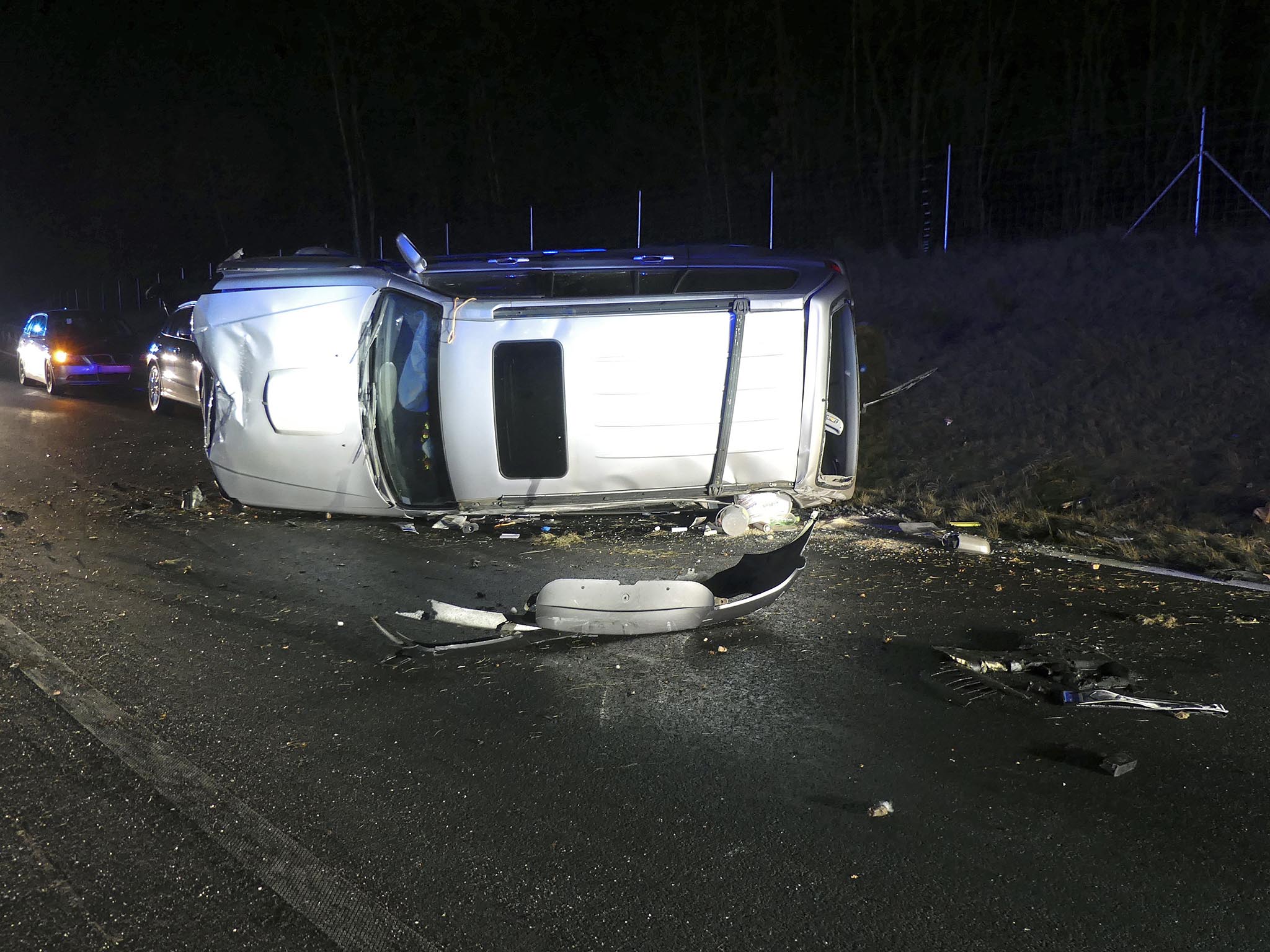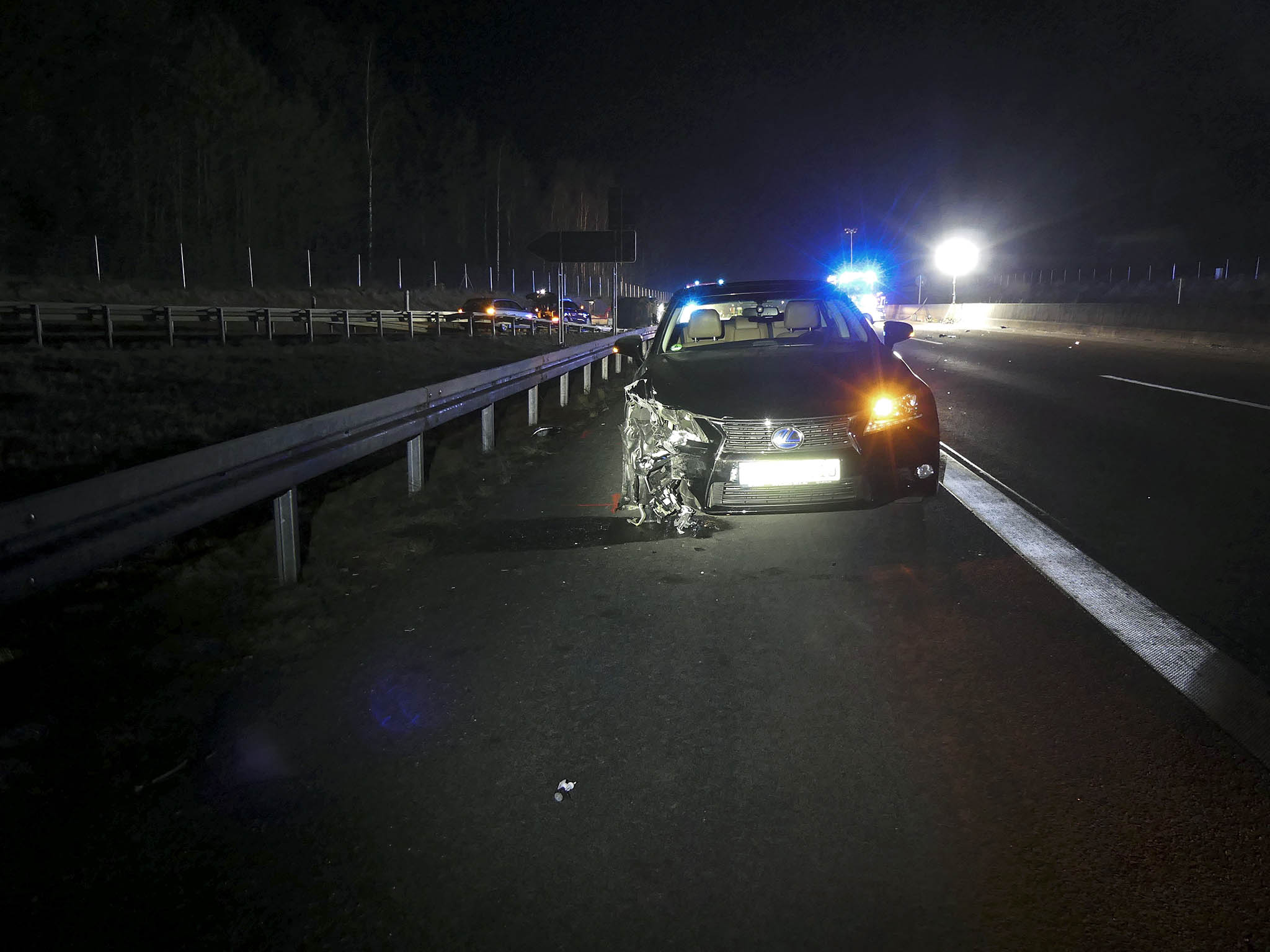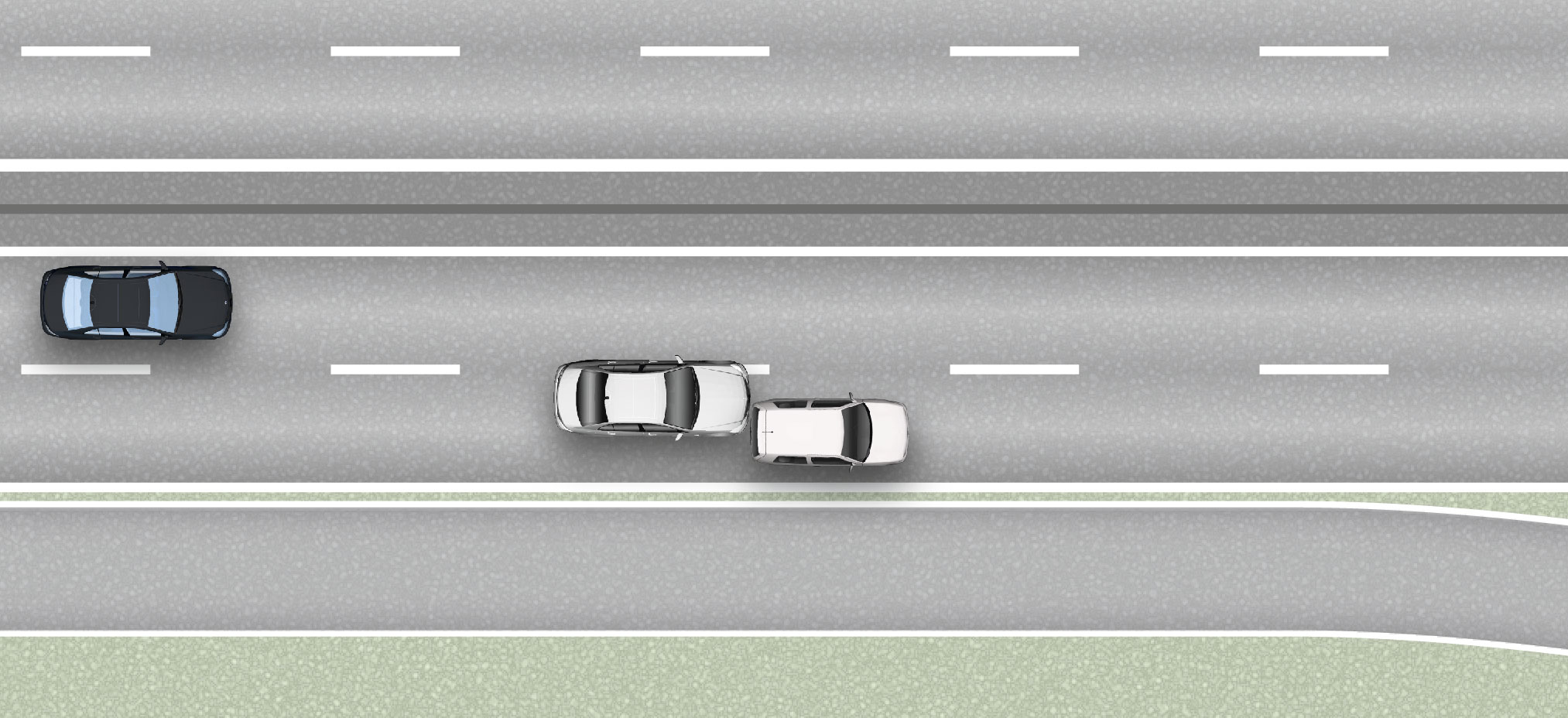Multi-car collision on freeway
Driver overwhelmed by navigation system
Sequence of events:
The 74-year-old driver of a car was driving in the right-hand lane of a two-lane freeway at night. As he approached a junction, he slowed down suddenly. Despite initiating emergency braking procedures, the driver of the car behind him drove into his tail. The crash caused the second car to flip over. A third car approaching from behind also collided with the first car, despite initiating emergency braking and taking evasive action.
The 74-year-old driver of a car was driving in the right-hand lane of a two-lane freeway at night. As he approached a junction, he slowed down suddenly. Despite initiating emergency braking procedures, the driver of the car behind him drove into his tail. The crash caused the second car to flip over. A third car approaching from behind also collided with the first car, despite initiating emergency braking and taking evasive action.
Persons involved in the accident:
Three car drivers
Three car drivers
Consequences/injuries:
The driver and passenger of the car that braked suddenly and the driver of the first car to crash into them sustained severe injuries. The driver and passenger of the third car suffered minor injuries.
The driver and passenger of the car that braked suddenly and the driver of the first car to crash into them sustained severe injuries. The driver and passenger of the third car suffered minor injuries.
Cause/problem:
The analysis of the mobile navigation system in the car that braked suddenly showed that the driver had already covered 250 km, that the device was running on an outdated set of maps, and that the system had provided instructions to turn off the freeway that did not match the infrastructure at the site of the accident. It is probable that the driver was confused by the misleading instructions and had braked suddenly in order to work out which way to go. The driver of the second vehicle was unable to brake in time because he had either been driving too close to the first vehicle or not been paying sufficient attention.
The analysis of the mobile navigation system in the car that braked suddenly showed that the driver had already covered 250 km, that the device was running on an outdated set of maps, and that the system had provided instructions to turn off the freeway that did not match the infrastructure at the site of the accident. It is probable that the driver was confused by the misleading instructions and had braked suddenly in order to work out which way to go. The driver of the second vehicle was unable to brake in time because he had either been driving too close to the first vehicle or not been paying sufficient attention.
Avoidance measures, mitigation of consequences/ strategy for road safety measures:
Satnav systems need to be kept up to date, as incorrect or unsuitable instructions can confuse and distract drivers, especially at complex junctions. At the same time, however, all drivers must take care to ensure that the instructions provided by their navigation systems do not lead them to engage in dangerous driving maneuvers. When planning a route, care must be taken to ensure that the journey does not exceed the maximum distance suitable for the driver’s physical abilities, that regular breaks are taken, and that older people in particular avoid driving at dusk and in darkness whenever possible – especially on unfamiliar routes.
Satnav systems need to be kept up to date, as incorrect or unsuitable instructions can confuse and distract drivers, especially at complex junctions. At the same time, however, all drivers must take care to ensure that the instructions provided by their navigation systems do not lead them to engage in dangerous driving maneuvers. When planning a route, care must be taken to ensure that the journey does not exceed the maximum distance suitable for the driver’s physical abilities, that regular breaks are taken, and that older people in particular avoid driving at dusk and in darkness whenever possible – especially on unfamiliar routes.
The accident would have been avoidable for the drivers of both the second and the third cars if they had been paying the requisite attention when using the road and/or maintained a safe distance from the vehicles in front of them. An automated emergency braking system that is effective at the relevant speeds would have mitigated the consequences of the accident; an advance collision warning system may have been able to prevent the accident entirely.




